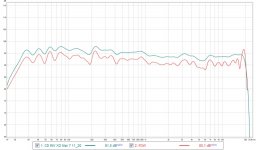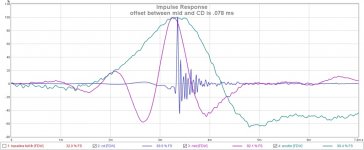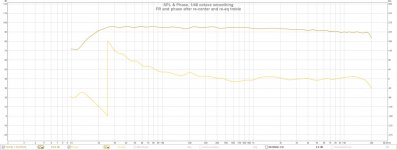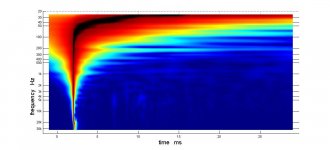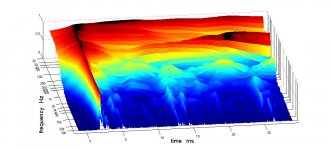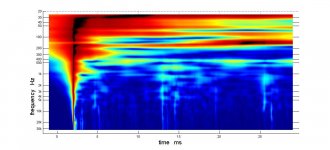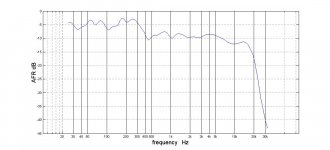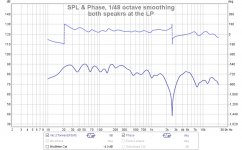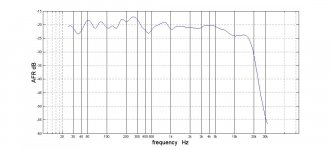I had forgotten that the 4x10 HD had no FIR ability at all. You do have an Open DRC though don't you, for the rephase filter?
If you do you, you already have a minisharc inside. They do have an 8 channel DAC board that will connect straight to it for about $100, not top of the line and not differential but maybe worth a try.
I really don't understand the desire to have a differential output as a prime consideration in a home environment. If your amp has a balanced input you can still use a pseudo balanced cable and get most of the common mode rejection. If your cables are a reasonable length the difference in slight to nil in practice. The differential receiver in the amp is the most important stage in the chain.
I suspect none of that will interest you so I shall just wait to see if you can find another way to get there 😉
Thanks for pointing out the 8 ch DtoA option. As to why balanced, I just hate to leave any potential noise immunity on the floor. I don't want to get into troubleshooting noise problems if I can avoid them in the first place.
You are most probably correct that a well executed single ended audio output would work fine. But this morning's encouragement from Wesayso suggests I don't need to go there.
Jack, your last attempt is the best yet. As you can see some fiddling can improve it but you're on your way with good crossovers this time.
Now it gets important to keep these results at the listening spot. 🙂
What did you use to align these? Did you use my REW trick?
Thanks. That is what I wanted to hear - that I'm on the right track. Now to keep moving ahead in the right direction. Dealing with the room is going to be a bigger problem.
To align these, I set DSP delays to align IR peaks with just the XO filter linearization FIR on. Then I tried small delay variations either side of that to and picked the one that gave me the flattest response. The one I picked was just 1 click of the dial - 0.01 ms - away from nominal.
But prior to that, I went back into the miniDSP and EQed the CD onto the sloping house curve response and got that part of the curve smoother.
And after that I added a paragraphic phase equalization step. With my DSP setup I can do one more equalization step by measuring again with filters linearized and paragraphically equalizing to that measurement, potentially both in gain and phase. I have to be careful not to correct too much and change the time alignment. I also have the TDA APL1 so I can do room equalization through that without affecting the crossover.
Looks like I need to read it again. Amazing the basic information your brain remembers without the specifics to be useful!
I know it's in that thread because I put it there. 🙂 I've searched for that output in DRC and have it set to give me that graph as IR by default.
Here's the frequency dependent window from REW compared to the one I use in DRC:
Easy to see which one gives us more detail.
The variable you are looking for within DRC-FIR is:
MPPFOutFile = xxx.pcm
This line is commented out by default, give it a name in place of the "xxx" and you get whatever frequency dependent window settings you set in DRC-FIR.
The combinations to define that window are nearly endless though.
Attachments
I know it's in that thread because I put it there. 🙂 I've searched for that output in DRC and have it set to give me that graph as IR by default.
The variable you are looking for within DRC-FIR is:
MPPFOutFile = xxx.pcm
This line is commented out by default, give it a name in place of the "xxx" and you get whatever frequency dependent window settings you set in DRC-FIR.
The combinations to define that window are nearly endless though.
Now I don't need to go back through that thread, thanks 🙂
I guess this last round of fiddling was a succes. Jack's off line listening 😀.
Well, true; but I haven't been completely idle. I decided to find out how much the IR aligment changed due to adding the paragraphic phase EQ to the XO filter linearization. After filter linearization, I had carefully aligned the IR peaks. The picture below is the alignment I had two days ago after adding the phase correction on top of that and probably tuning a PEQ or two:
The CD is correctly centered in the woofer response but the mids are early. Of course I corrected it and then I couldn't help myself and did some re-eq of the treble and that is what I ended up listening to. Fortunately, the timing changes only had a small, easily compensated effect on the frequency response. I think its marginally better than what I had before.
But I see that I'm in a non-converging process. Every time I tweak something, I end up finding something else that needs to be tweaked and I drift further away from the once flat phase. Moving to a linear phase XO might let me break out of that loop. With linear XO filters, I go directly to align on IR peaks and would have more EQ resources for matching the driver target curves.
But before I go there I want to start over clean and see how hard it is to get back to this point. The setup I have now should work so long as I'm careful to realign after each change. What I really need to do is to make all needed changes at one time instead of incrementally. It seems to me I should be able to do a paragraphic gain eq at the same time I do a paragraphic phase eq, with REW doing an auto-EQ of the gain and then me manually EQing the phase of the same measurement.
Comparing my latest TDA 3D to Wesayso's what stands out is the clean color band edges around the direct response vs the ragged edges in mine. These no doubt speak to the smoothness of his correction vs the relative roughness of mine - likely due to my manually EQing with limited resources. I'm hoping in that doing a paragraphic rew-assisted auto-EQ will fix some of that.
I've also concluded that I need a high pass filter on my woofer. As it stands now, I'm driving it to high distortion when playing LOUD with deep bass content. This gives me added motivation to start relatively fresh. Eventually, I will have to get my subs out and integrated.
Attachments
Some thoughts on this. If you setup a normal crossover first, like you have done here you get to check if that works out the way it is planned. So you know what compensation to use with RePhase's correction for those curves. I think it remains important to see it in that order. Moving directly to linearized crossovers gives you less insight if everything lines up properly.
My advise would be to do it as before. That's the only way you can verify to have everything setup right. Don't try and cut corners... it isn't worth it. Be more patient and get it right.
Yes it takes more time this way. But look at what you gain. Scroll back to your early beginnings and see the difference in what you have now.
On the gain EQ? whenever you do gain EQ, if it's not linear phase you should correct phase as a second step. I think you are talking about linear phase gain EQ, which would let you do it all in one step.
As I said before, aside from crossovers regular IIR PEQ would be all that is needed to correct most FR problems. It would immediately fix phase as well.
One more thing: you can do better than auto EQ from REW, trust me. Just make sure you EQ with a FDW of about ~5/6 cycles at the most. As long as you can handle that amount of manipulation in your FIR engine I'd do the EQ manually.
The more you get everything in line timing wise, the more the load will be on the low end of the woofers. I think it would be a wise choice to add subs to the mix. I hope they don't disturb the timing you've got now.
My advise would be to do it as before. That's the only way you can verify to have everything setup right. Don't try and cut corners... it isn't worth it. Be more patient and get it right.
Yes it takes more time this way. But look at what you gain. Scroll back to your early beginnings and see the difference in what you have now.
On the gain EQ? whenever you do gain EQ, if it's not linear phase you should correct phase as a second step. I think you are talking about linear phase gain EQ, which would let you do it all in one step.
As I said before, aside from crossovers regular IIR PEQ would be all that is needed to correct most FR problems. It would immediately fix phase as well.
One more thing: you can do better than auto EQ from REW, trust me. Just make sure you EQ with a FDW of about ~5/6 cycles at the most. As long as you can handle that amount of manipulation in your FIR engine I'd do the EQ manually.
The more you get everything in line timing wise, the more the load will be on the low end of the woofers. I think it would be a wise choice to add subs to the mix. I hope they don't disturb the timing you've got now.
you get to check if that works out the way it is planned
Right now, its not working out like it was planned in terms of driver polarity but it is working; a mystery I'd like to get to the bottom of some day, but not at the expense of listening today
I hear you about the other stuff, pretty much reflects my own thinking.
I think that with Rephase's paragraphic gain eq and sufficient patience one can outperform REW's auto-EQ but with the lmited set of 5 PEQs per input and output in the IIR miniDSP, REW auto-EQ will do better if the curve being worked on is challenging. REW spends a lot of compute cycles finding the best set of PEQ frequencies and Q's; it would take too long to do that manually. In RePhase you have so many PEQs available you can afford to be inefficient. In any case, you can always improve on what REW does if you have any spare PEQs.
I don't understand why improved timing means higher load on the woofers. It means improved dynamics at the system level but the individual drivers still move at the same speed as before the time alignment was optimized. OTOH I do know that as I improve the system I will put more load on the woofers because that is the way I like it. The subs are a hole card that I'm waiting for the end game to play.
Right now, its not working out like it was planned in terms of driver polarity but it is working; a mystery I'd like to get to the bottom of some day, but not at the expense of listening today
I hear you about the other stuff, pretty much reflects my own thinking.
I think that with Rephase's paragraphic gain eq and sufficient patience one can outperform REW's auto-EQ but with the lmited set of 5 PEQs per input and output in the IIR miniDSP, REW auto-EQ will do better if the curve being worked on is challenging. REW spends a lot of compute cycles finding the best set of PEQ frequencies and Q's; it would take too long to do that manually. In RePhase you have so many PEQs available you can afford to be inefficient. In any case, you can always improve on what REW does if you have any spare PEQs.
I don't understand why improved timing means higher load on the woofers. It means improved dynamics at the system level but the individual drivers still move at the same speed as before the time alignment was optimized. OTOH I do know that as I improve the system I will put more load on the woofers because that is the way I like it. The subs are a hole card that I'm waiting for the end game to play.
I don't understand why improved timing means higher load on the woofers. It means improved dynamics at the system level but the individual drivers still move at the same speed as before the time alignment was optimized. OTOH I do know that as I improve the system I will put more load on the woofers because that is the way I like it. The subs are a hole card that I'm waiting for the end game to play.
The speed hasn't changed, but weren't we discussing timing? 🙂
I agree the timing hasn't changed. I still don't understand how improved timing increases the load. It seems to me it gets better results from the same load.
Your timing has changed. From a sloped phase to a more straight one.
Figure out how simultaneous played notes sum up in a wave shape. Where do you think more excursion is needed, playing a couple of notes simultaneously or slightly out of sync.
Which one taxes the woofer more... Yours is still crossed over, but play a note on the bass together with a hit on the drums and a guitar note all at the same time. How do they sum in a wave shape....
Figure out how simultaneous played notes sum up in a wave shape. Where do you think more excursion is needed, playing a couple of notes simultaneously or slightly out of sync.
Which one taxes the woofer more... Yours is still crossed over, but play a note on the bass together with a hit on the drums and a guitar note all at the same time. How do they sum in a wave shape....
Last edited:
Well if you look at my phase curve, its still stilted across the woofer's BW, perhaps not as much as before. I hear what you are saying; I don't think its a big effect. Certainly not as big as what happens when thinking if this much bass is good, perhaps more would be better🙂
Besides, you could and probably do get same/similar phase differences between notes just from a small random deviation from the beat in striking one note or the other.
Besides, you could and probably do get same/similar phase differences between notes just from a small random deviation from the beat in striking one note or the other.
Well, I still need to implement that HPF. Its the multiple instruments at once scenario that convinced me of this. I have the filters but I was curious about how the current XO measures at the LP. This morning I took those measurements.
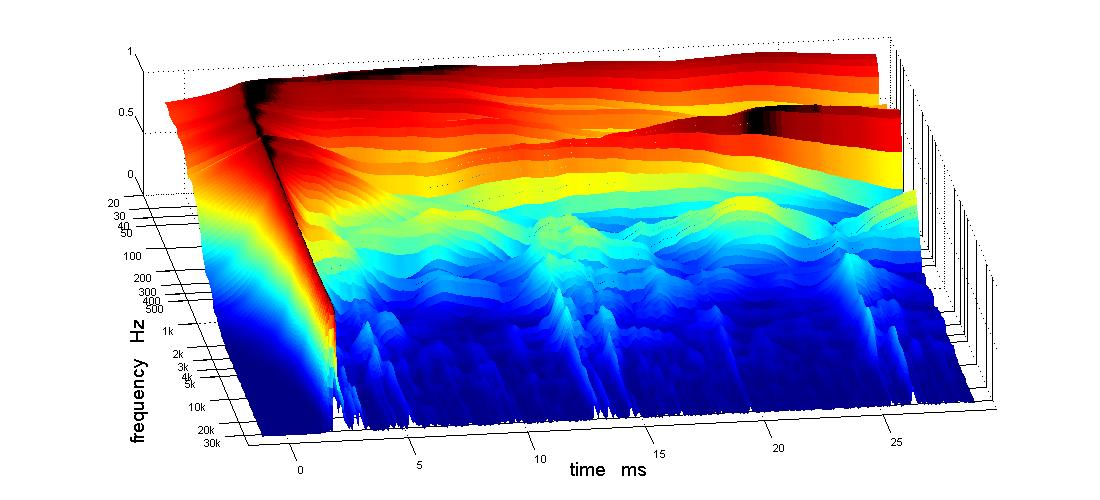
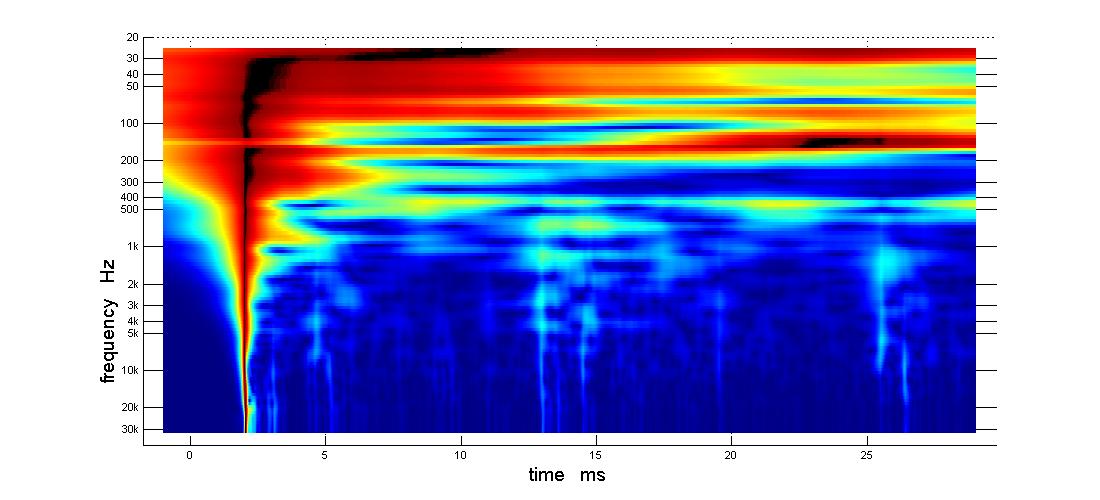
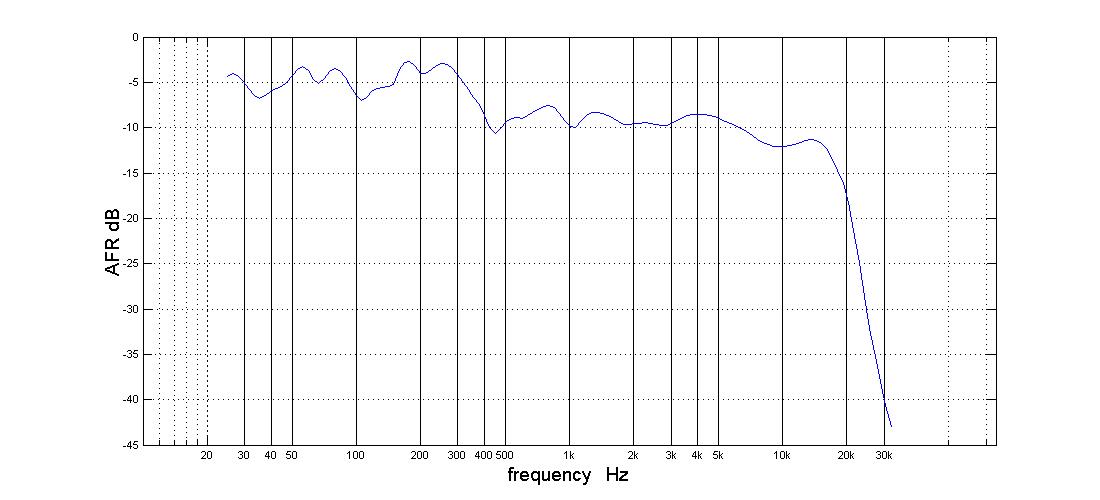
I have to say that the elevated bass and lower midrange is exactly how it sounds. That looks like something that TDA_EQ could fix pretty easily.
I took a REW measurement out at the LP but with both speakers on so it shows some combing. Those FR ripples in the upper bass smooth out with ERB or psychoacoustic smoothing.
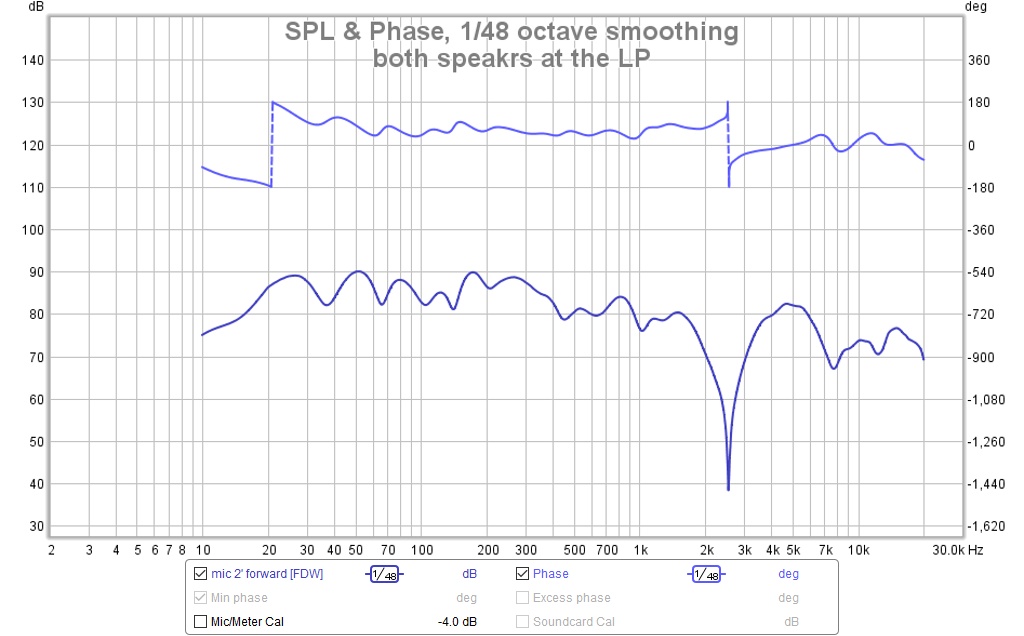
I have to say that the elevated bass and lower midrange is exactly how it sounds. That looks like something that TDA_EQ could fix pretty easily.
I took a REW measurement out at the LP but with both speakers on so it shows some combing. Those FR ripples in the upper bass smooth out with ERB or psychoacoustic smoothing.
Attachments
Line up the impulse peaks at the listening position and the combing will go away. Just move the mic till you see one peak in REW. Then rerun APL to see the difference. I'm a bit amazed to see a quicker bass than in the close measurements. As said earlier that might sound weird or off on some material. I'd rather have the plot as in the up close measurements. It will sound more natural.
Thanks for the tip. I should have thought of that.
the cancellation null is gone. I dialed back the woofer level about 3 db but no new EQ
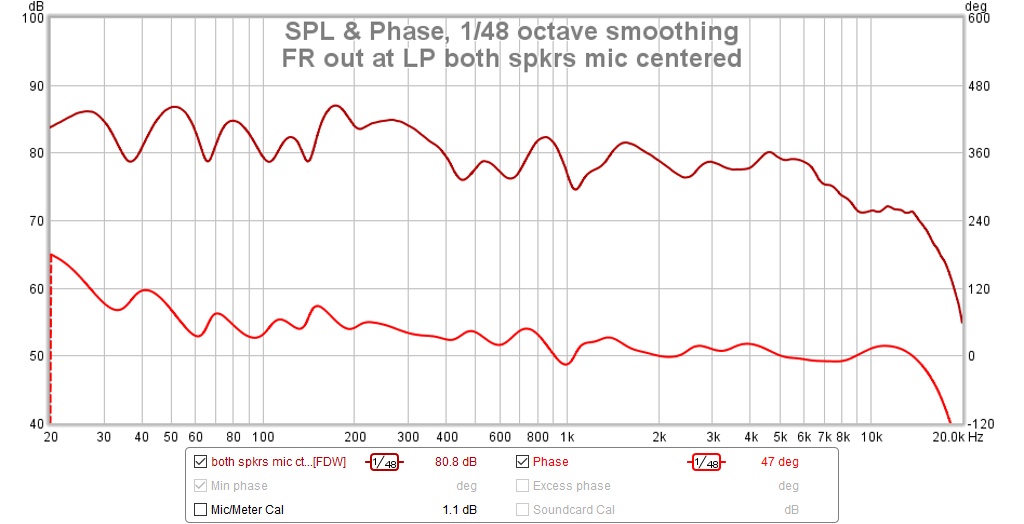
The IR is interesting. That early reflection is now coming in out of phase
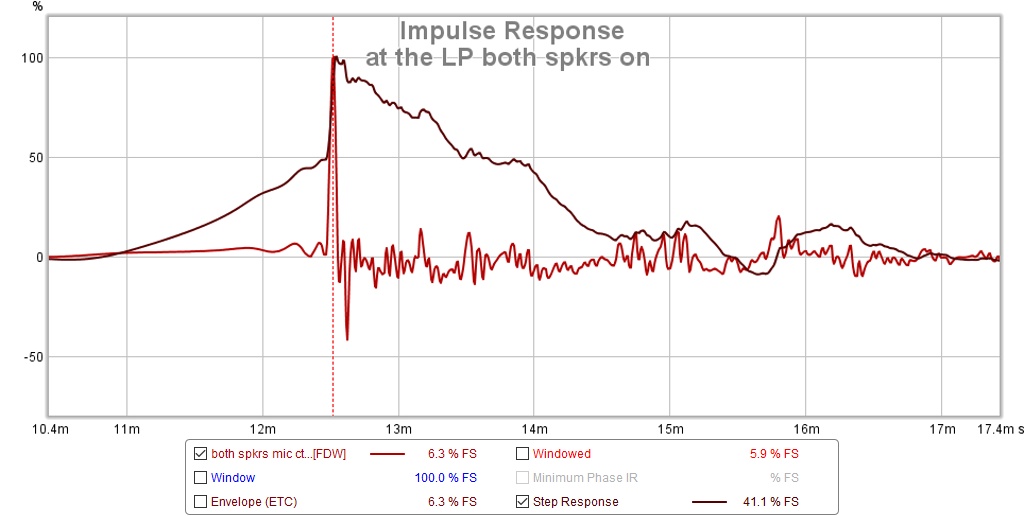
TDA
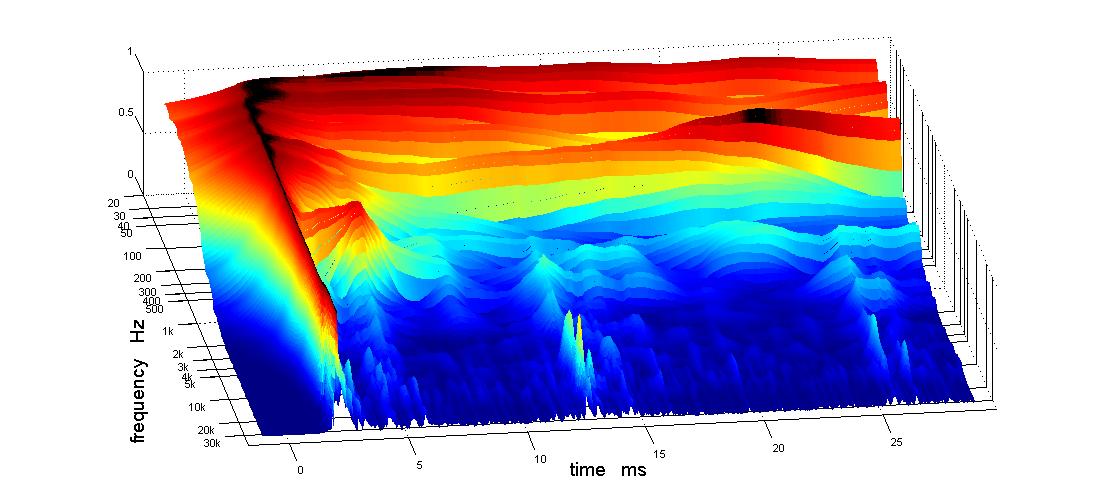
TDA pl. What is that at 1 Khz?
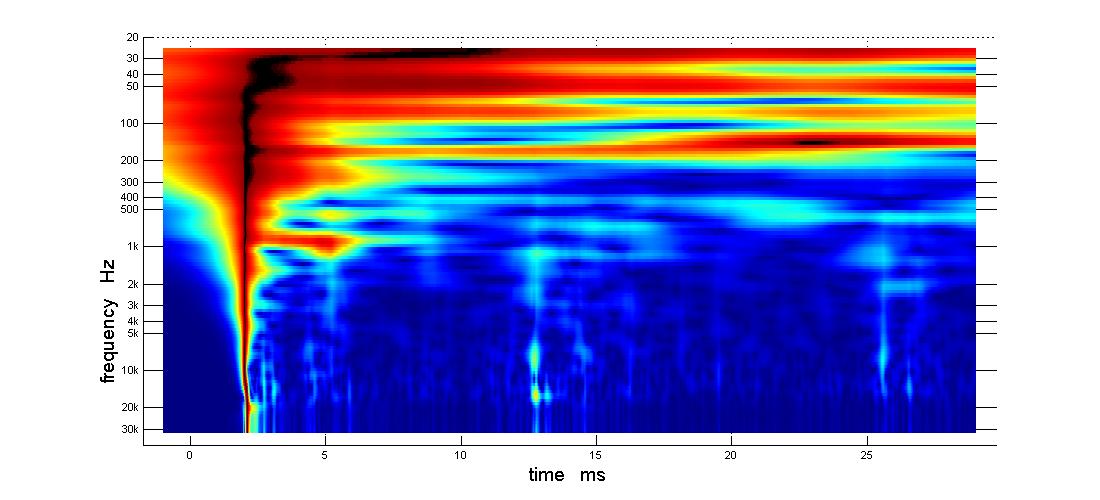
The direct response has a small dip at 1 Khz but the AFR-Q had a narrow deep null
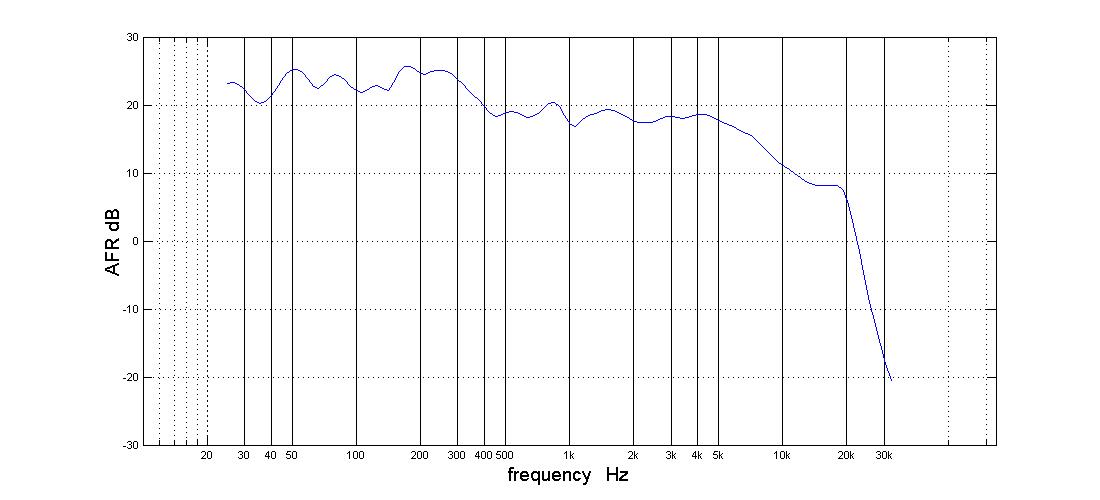
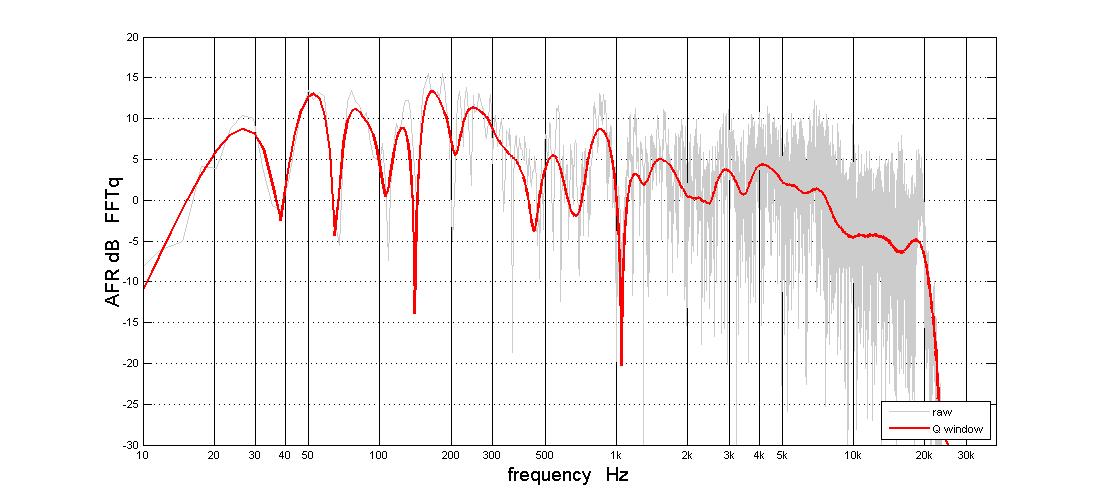
the cancellation null is gone. I dialed back the woofer level about 3 db but no new EQ
The IR is interesting. That early reflection is now coming in out of phase
TDA
TDA pl. What is that at 1 Khz?
The direct response has a small dip at 1 Khz but the AFR-Q had a narrow deep null
Attachments
-
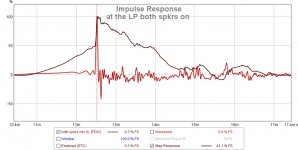 IR and step out at the LP boht spkers FIR.jpg95.6 KB · Views: 475
IR and step out at the LP boht spkers FIR.jpg95.6 KB · Views: 475 -
 tda 3d at the LP both spkrs on FIR on.jpg69.8 KB · Views: 479
tda 3d at the LP both spkrs on FIR on.jpg69.8 KB · Views: 479 -
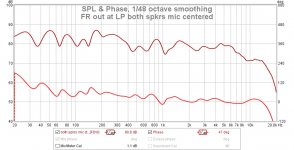 FR out at LP both spkrs mic centered.jpg118.4 KB · Views: 479
FR out at LP both spkrs mic centered.jpg118.4 KB · Views: 479 -
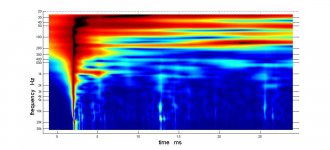 tda pl at the LP both spkrs on FIR on.jpg63.7 KB · Views: 477
tda pl at the LP both spkrs on FIR on.jpg63.7 KB · Views: 477 -
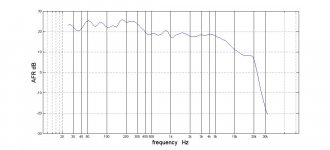 tda afr at the LP both spkrs FIR on.jpg59.9 KB · Views: 478
tda afr at the LP both spkrs FIR on.jpg59.9 KB · Views: 478 -
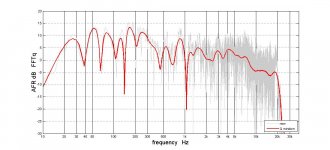 tda AFR-Q at LP fIr both spkrs.jpg78 KB · Views: 481
tda AFR-Q at LP fIr both spkrs.jpg78 KB · Views: 481
Those TDAs were done before I trimmed the bass level. Here is where I ended up.
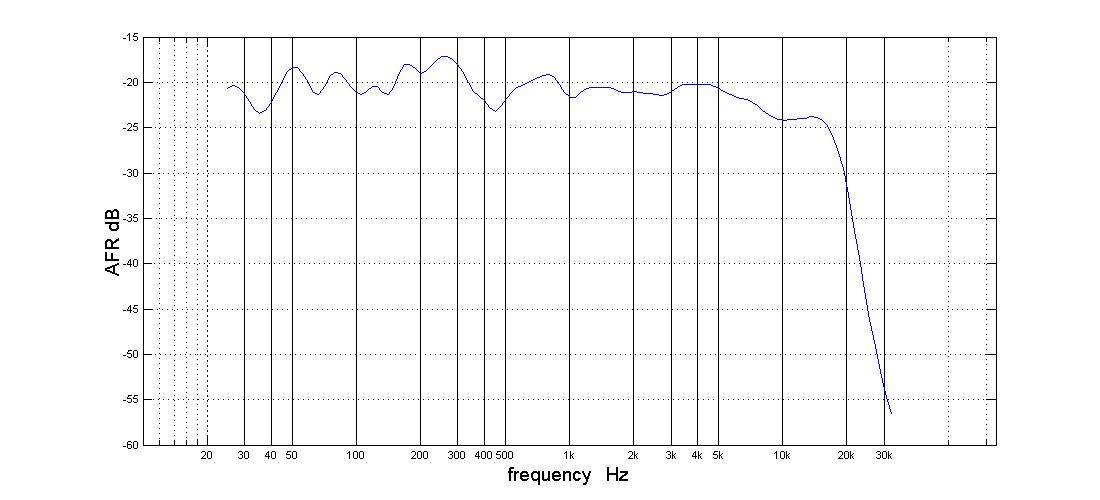
I definitely need to do some EQ at the LP. I did a TDA+EQ run but its results were disappointing - overwhelmed by the room modes. For TDA_EQ to work I need to need to get out of the null of that 150 hz or so room mode and I didn't find the right spot today. Considering to average some measurements in REW and use the remaining PEQs in the OpenDRC
I definitely need to do some EQ at the LP. I did a TDA+EQ run but its results were disappointing - overwhelmed by the room modes. For TDA_EQ to work I need to need to get out of the null of that 150 hz or so room mode and I didn't find the right spot today. Considering to average some measurements in REW and use the remaining PEQs in the OpenDRC
Attachments
I definitely need to do some EQ at the LP. I did a TDA+EQ run but its results were disappointing - overwhelmed by the room modes. For TDA_EQ to work I need to need to get out of the null of that 150 hz or so room mode and I didn't find the right spot today. Considering to average some measurements in REW and use the remaining PEQs in the OpenDRC
This sounds like a plan for now. I'd suggest averaging the measurements with the (A+B/2) done in pairs. That will preserve the phase part and gives you an opportunity to use windows if needed.
You've got to make sure the measurements are all timed alike (for instance at 0) before averaging them though. I'd do it separately for left and right speaker and then check the summed result.
Just a few thoughts...
how detailed an EQ would you do?This sounds like a plan for now. I'd suggest averaging the measurements with the (A+B/2) done in pairs. That will preserve the phase part and gives you an opportunity to use windows if needed.
You've got to make sure the measurements are all timed alike (for instance at 0) before averaging them though. I'd do it separately for left and right speaker and then check the summed result.
Just a few thoughts...
I was thinking to just try to smooth out the worst several bumps
At the listening position? Just use global EQ, nothing too detailed. Get the general shape right. To really accomplish something you'd be better off finding and solving the reflections themselves.
- Home
- Loudspeakers
- Multi-Way
- My Synergy Corner Horn and Bass Bins
